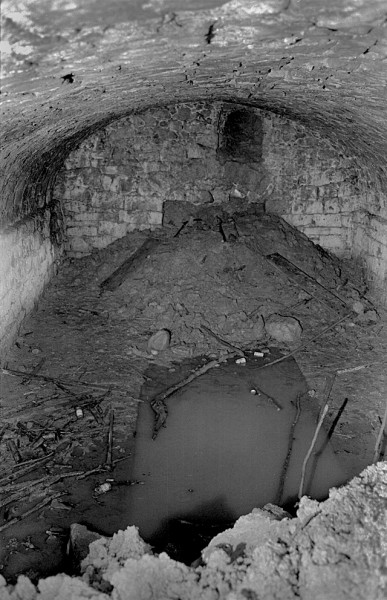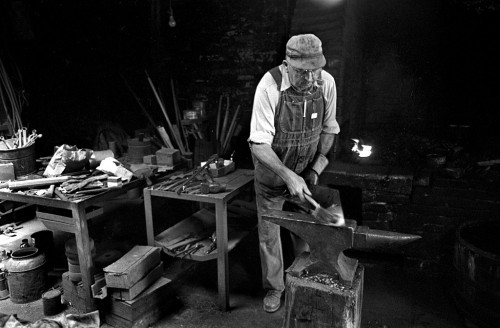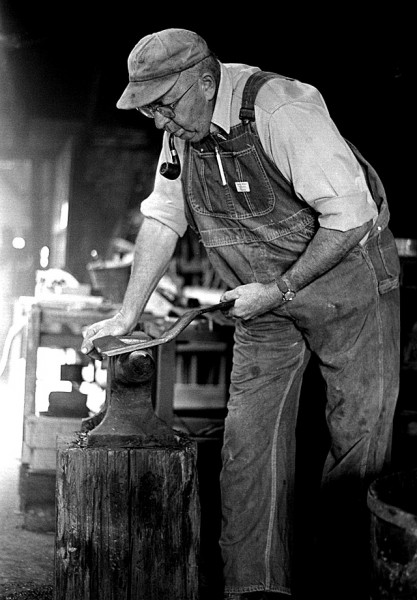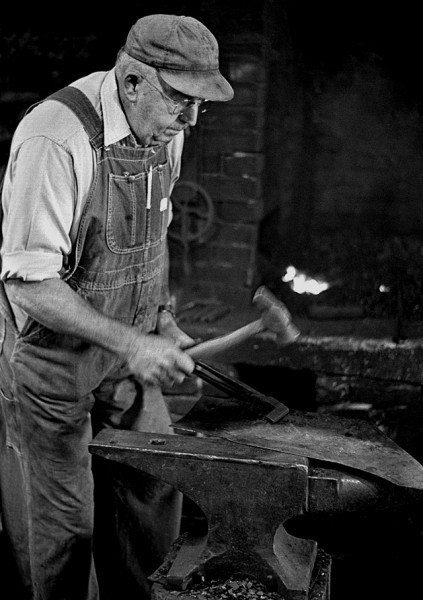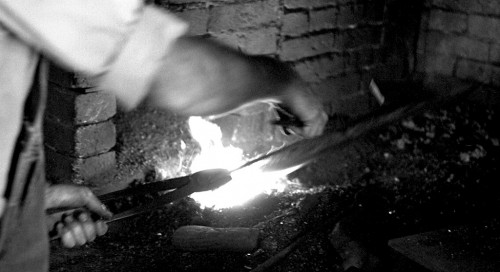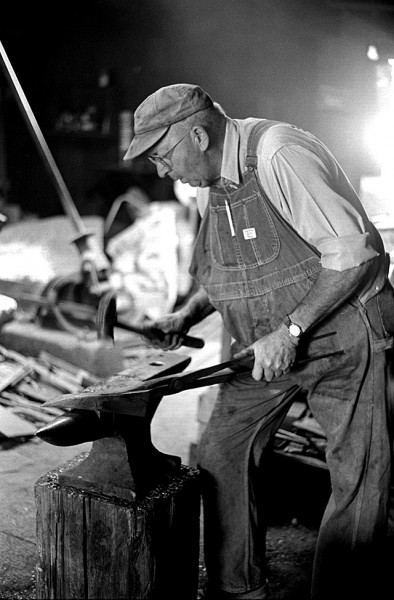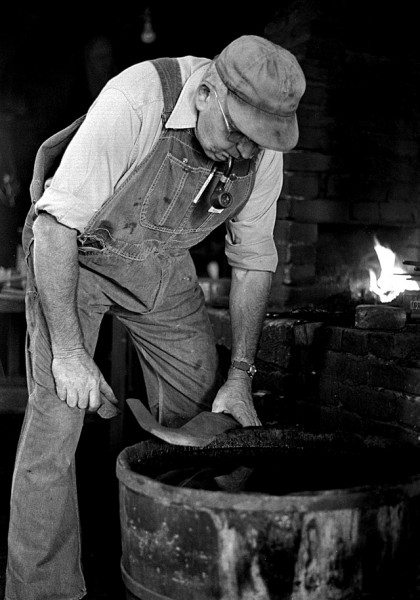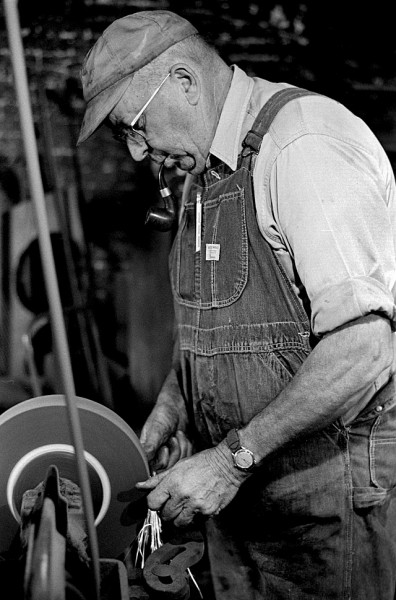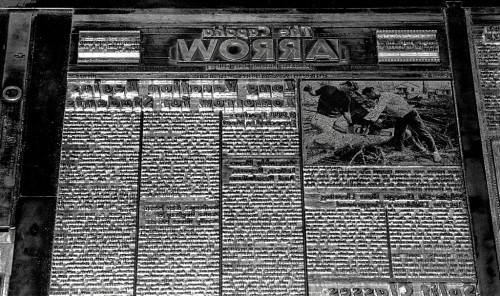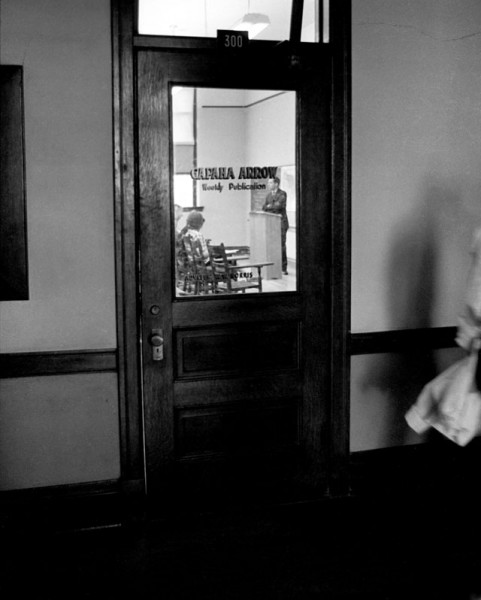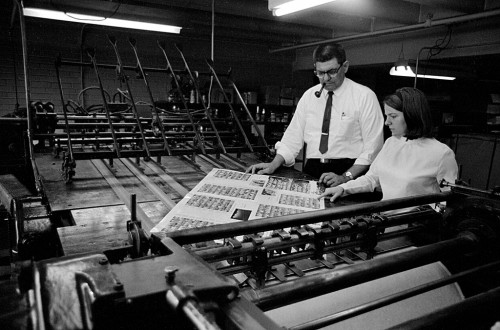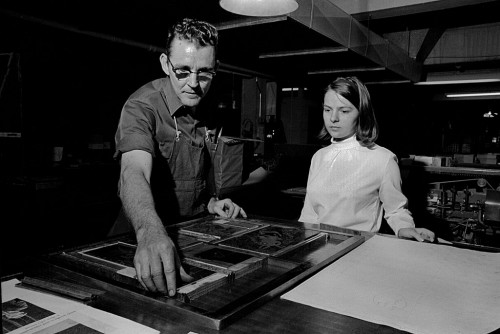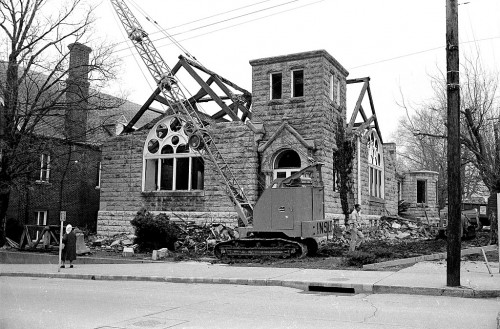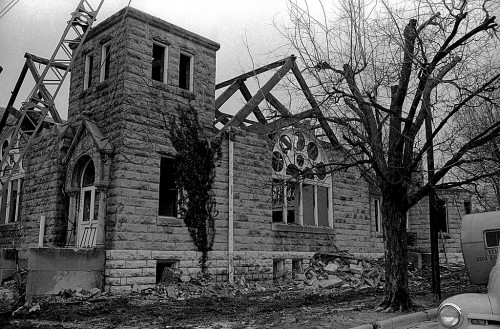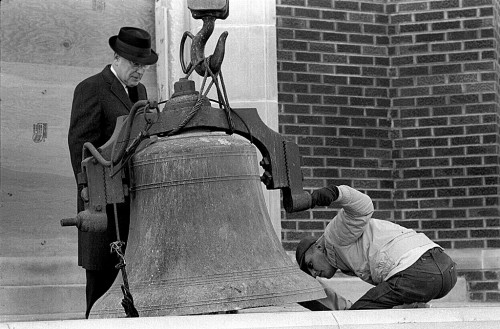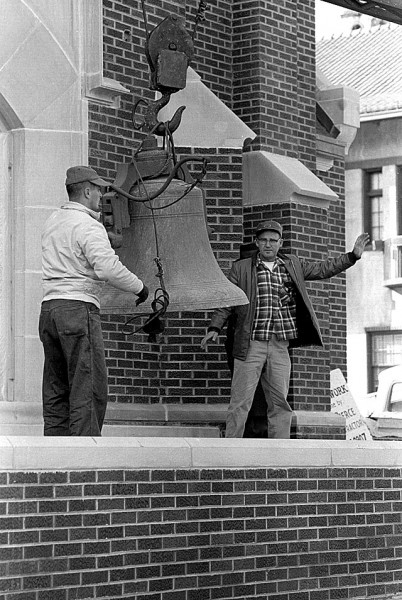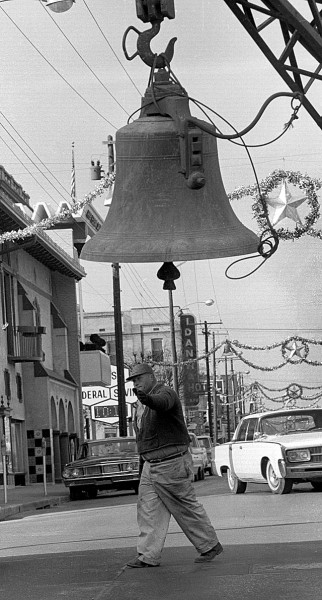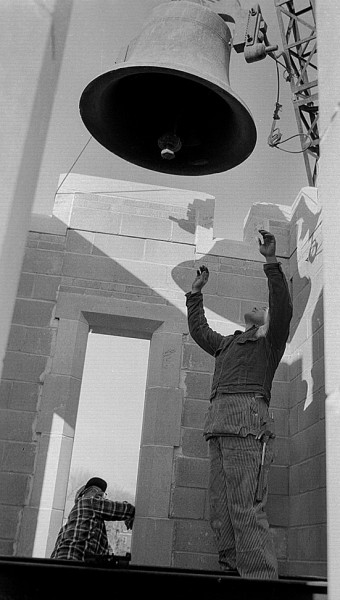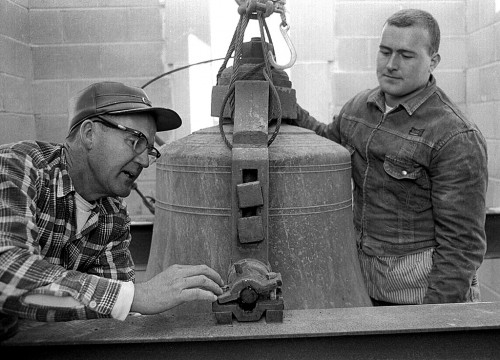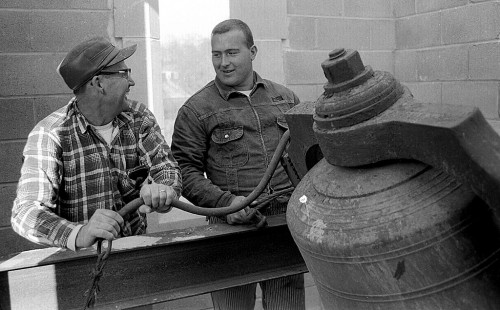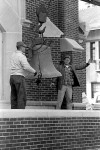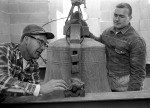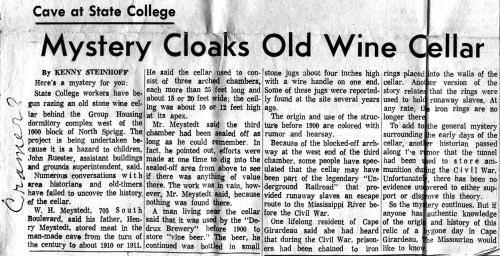 No wonder the North Sprigg Street wine / beer cellar jangled the memory bells yesterday: I WROTE The Missourian story about it.
No wonder the North Sprigg Street wine / beer cellar jangled the memory bells yesterday: I WROTE The Missourian story about it.
Shy Reader did some snooping around and figured out why I couldn’t find the story: The Google Archive jumps from May 16 to June 6 and this story bylined “Kenny Steinhoff” ran May 17, 1966.
John Blue must have edited this story and given me the byline. My official newspaper name was Kenneth L. Steinhoff; he probably slapped the “Kenny” on it and shipped it to the backshop to be set into lead type. Click on it to make it easier to read.
The Old Cramer Home
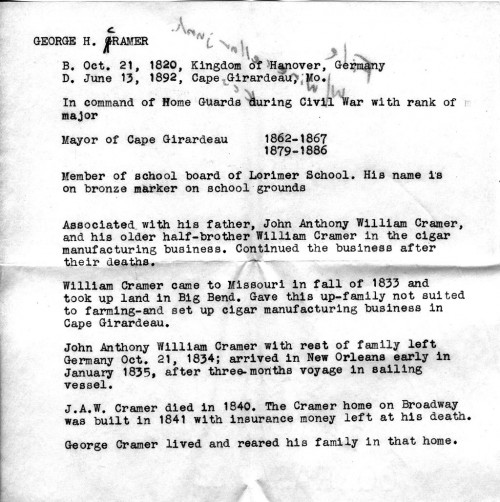 One of the advantages of Old Tech is that you can scrawl notes on the side of the clip. This one had the question “Cramer?” written on it, which led Shy Reader to these notes about the Cramer family.
One of the advantages of Old Tech is that you can scrawl notes on the side of the clip. This one had the question “Cramer?” written on it, which led Shy Reader to these notes about the Cramer family.
What do we know about the cellar?
- It was behind the SEMO Group Housing complex west of the 1000 block of North Sprigg
- It was razed because it was a hazard to children
- W.H. Meystedt said his father, Henry Meystedt, stored meat in the man-made cave from the early 1900s to 1910 or 1911
- It consisted of three arched chambers, each more than 25 feet long and about 15 or 20 feet wide. It was 10 or 12 feet high at the apex.
- The third chamber had been sealed off. When it was dug into from the top, it was empty.
- Someone said that the cellar was used by the “Dedrux Brewery” before 1900 to store “vine beer.”
- The origin and use of the cellar before 1900 is colored with rumor and speculation, involving the legendary Underground Railroad tunnels, Civil War prisoners and a possible ammunition dump.
- “Kenny” Steinhoff asked if anyone who had authentic knowledge of the history of the relic of a bygone day to contact The Missourian, just like “Ken” Steinhoff did 45 years later.

